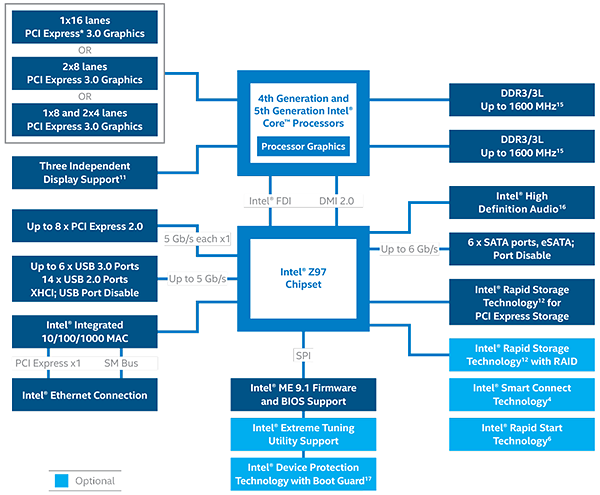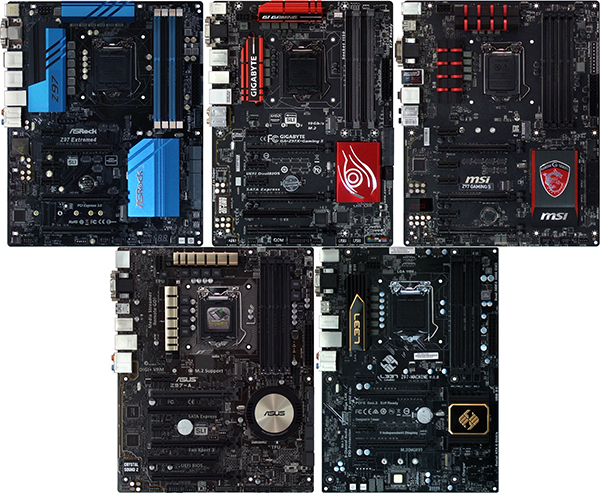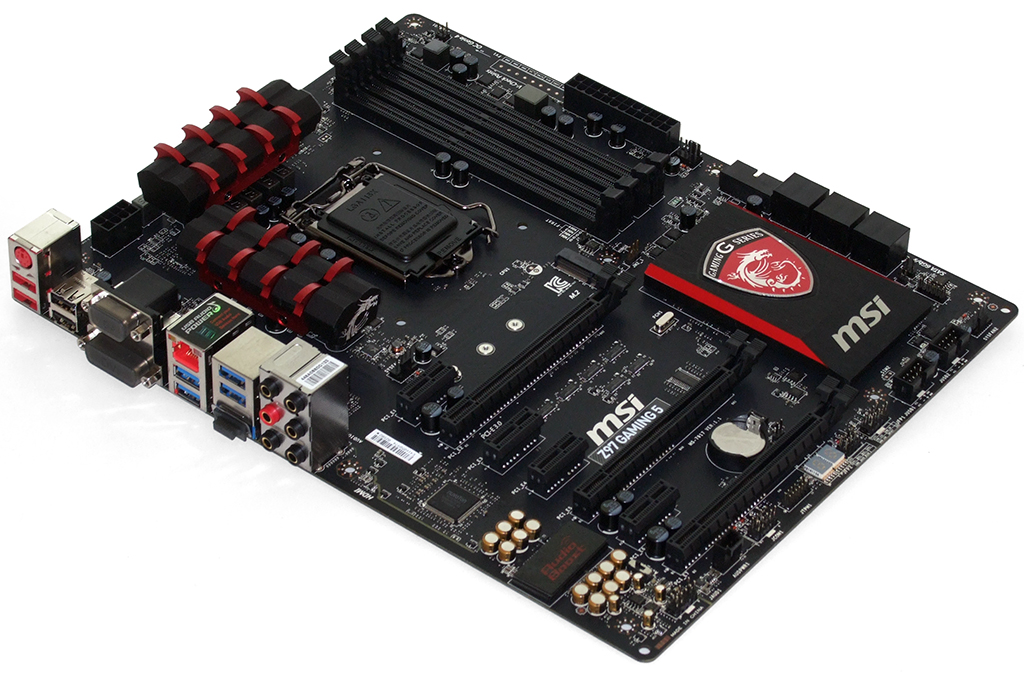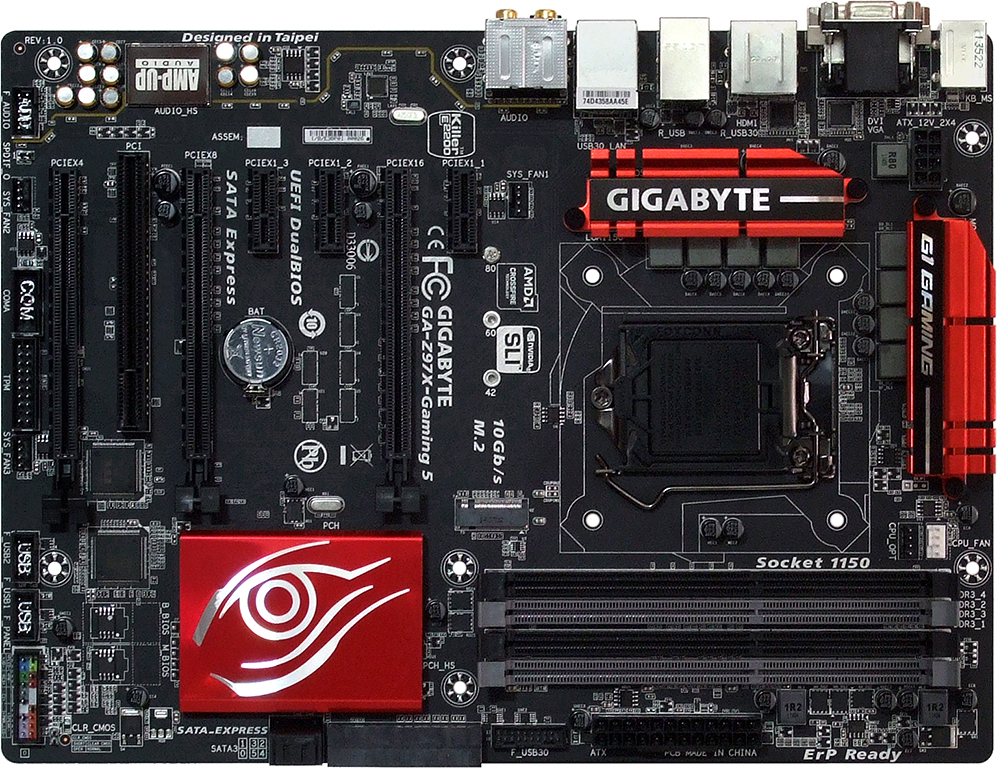Intel Z97 Express: Five Enthusiast Motherboards, $120 To $160
Tom’s Hardware readers set a higher bar for enthusiast-class motherboards, demanding overclocking capabilities and more robust feature sets. Priced from $120 to $160, we welcome the first five Z97 motherboards to our enhanced definition of mainstream!
Gaming Raises The Mainstream
Tom’s Hardware readers are a savvy bunch. Simply visiting this site means that you’re either a knowledgeable technologist or eager to learn more. We keep it real for you. When a motherboard manufacturer uses the term mainstream, we know they're talking about budget-oriented. A couple of weeks ago, we sent out the invitations for our first round-up of boards based on Intel's brand new "mainstream" chipset, Z97 Express. In the invite, we had to tell vendors we were looking for enthusiast-class products, even though, to most of us, that range between $120 to $160 really is mainstream.
In the quest to differentiate, motherboard companies are getting more aggressive about segmentation. Simply requesting a batch of enthusiast-oriented submissions between those price posts isn't specific enough. Did we want overclocking-focused boards? Gaming-oriented? Is there really such a thing as a motherboard optimized for gaming? We're certainly excited that the explosion of high-profile games is pushing the boundaries of product design, at the very least.
Here's exactly what we're looking for, though: boards that support a couple of PCI Express graphics cards, high-end audio output, a high level of configurability, and enough stability to push a top overclock. However that combination of capabilities is classified, sure, gaming is in there. We just don't like limiting our performance pursuits to a single type of task.
And how about that new, mainstream chipset? It’s a good one. We know this because it’s been on the market for a year, more or less. I've confirmed with several motherboard manufacturers that Z97 Express is—at least functionally—a new stepping of the Z87. See that ME 9.1 firmware box in the above diagram? That’s Intel’s big achievement.
But before you dodge off to buy a motherboard we’ve already reviewed, you’ll want to look at the new crop anyway. These boards have new features that you’ll probably want, and are more likely to support your next-generation CPU upgrade out-of-the box. That’s because the new beta firmware that companies are releasing to support next-generation processors on Z87 products…preceded the launch of Z97. Of course, we won’t be able to make any promises until someone passes along a sample of Intel’s next-generation Core architecture.
| Z97 Mainstream Motherboard Features | |||||
|---|---|---|---|---|---|
| Row 0 - Cell 0 | ASRock Z97 Extreme4 | Asus Z97-A | Gigabyte Z97X Gaming 5 | L337 Gaming Z97-Machine | MSI Z97 Gaming 5 |
| PCB Revision | 1.02 | 1.03 | 1.0 | 1.0 | 1.1 |
| Chipset | Intel Z97 Express | Intel Z97 Express | Intel Z97 Express | Intel Z97 Express | Intel Z97 Express |
| Voltage Regulator | 12 Phases | Eight Phases | Eight Phases | Six Phases | Eight Phases |
| BIOS | P1.03 (05/20/2014) | 0604 (04/15/2014) | F2 (03/26/2014) | 5.6.5 (04/16/2014) | V1.1B1 (04/24/2014) |
| 100.0 MHz BCLK | 99.94 (-0.06%) | 99.98 (-0.02%) | 99.98 (-0.02%) | 100.12 (+0.12%) | 100.01 (+0.01%) |
| I/O Panel Connectors | |||||
| P/S 2 | 1 | 1 | 2 | 1 | 1 |
| USB 3.0 | 6 | 4 | 4 | 4 | 4 |
| USB 2.0 | 2 | 2 | 4 | 2 | 4 |
| Network | 1 | 1 | 1 | 1 | 1 |
| CLR_CMOS Button | None | None | None | None | None |
| Digital Audio Out | Optical | Optical | Optical | Optical | None |
| Digital Audio In | None | None | None | None | None |
| Analog Audio | 5 | 5 | 5 | 5 | 6 |
| Video Out | VGA, DVI-D, HDMI, DisplayPort | DisplayPort, HDMI, VGA, DVI-D | VGA, DVI-D, HDMI | VGA, DVI-D, HDMI | VGA, DVI-D, HDMI |
| Other Devices | None | None | None | None | None |
| Internal Interfaces | |||||
| PCIe 3.0 x16 | 3 (x16/x0/x0, x8/x8/x0, x8/x4/x4) | 2 (x16/x0 or x8/x8) | 2 (x16/x0 or x8/x8) | 2 (x16/x0 or x8/x8) | 3 (x16/x0/x0, x8/x8/x0, x8/x4/x4) |
| PCIe 2.0 x16 | None | 1 (2-pathways) | 1 (4-pathways) | None | None |
| PCIe 2.0 x1 | 3 | 2 | 3 (shared w/slot above) | 3 | 4 |
| USB 3.0 | 1 (2-ports) | 1 (2-ports) | 1 (2-ports) | 1 (2-ports) | 1 (2-ports) |
| USB 2.0 | 2 (4-ports) | 3 (6-ports) | 2 (4-ports) | 1 (2-ports) | 2 (4-ports) |
| SATA 6.0 Gb/s | 8 (Shares: M.2, SATA-E) | 6 (Shares SATA-E) | 6 (Shares: M.2, SATA-E) | 4 | 6 (Shares M.2) |
| SATA Express | 1 (Uses 2x SATA) | 1 (Uses 2x SATA) | 1 (Uses 2x SATA) | None | None |
| 4-Pin Fan | 2 | 5 | 5 | 4 | 5 |
| 3-Pin Fan | 4 | None | None | 2 | None |
| FP-Audio | 1 | 1 | 1 | 1 | 1 |
| S/PDIF I/O | None | Output Only | Output Only | Output Only | None |
| Internal Buttons | CLR_CMOS | MemOK, Power | None | Power, Reset | None |
| Internal Switch | Dual ROM Selector | EPU, TPU, EZ XMP | None | None | Audio Power Source |
| Diagnostics Panel | Numeric | None | None | Numeric | Numeric |
| Other Devices | M.2 (Sub 1x SATA, SATA-E), Serial COM port | M.2 (Sub 2x PCIe x1), 2x PCI, TB_Header, Serial COM | M.2 (Sub 1x SATA, SATA-E), PCI, Serial COM port | M.2 (Didicated SATA) | Serial COM port |
| Mass Storage Controllers | |||||
| Chipset SATA | 6x SATA 6Gb/s (Includes M.2, SATA-E) | 6x SATA 6Gb/s (Includes SATA-E) | 6x SATA 6Gb/s (Includes M.2, SATA-E) | 4x SATA 6Gb/s 1x M.2 | 6x SATA 6Gb/s (Includes M.2) |
| Chipset RAID Modes | 0, 1, 5, 10 | 0, 1, 5, 10 | 0, 1, 5, 10 | 0, 1, 5, 10 | 0, 1, 5, 10 |
| Add-In SATA | ASM1061 PCIe 2x SATA 6Gb/s | None | None | None | None |
| USB 3.0 | ASM1042AE PCIe | Z97 Integrated Only | Z97 Integrated Only | Z97 Integrated Only | Z97 Integrated Only |
| Networking | |||||
| Primary LAN | WGI218V PHY | WGI218V PHY | Killer E2201 PCIe | WGI218V PHY | Killer E2205 PCIe |
| Secondary LAN | None | None | None | None | None |
| WiFi | None | None | None | None | None |
| Bluetooth | None | None | None | None | None |
| Audio | |||||
| HD Audio Codec | ALC1150 | ALC892 | ALC1150 | ALC1150 | ALC1150 |
| DDL/DTS Connect | DTS Connect | DTS Connect | None | None | None |
| Warranty | Three Years | Three Years | Three Years | Three Years | Three Years |
SATA Express (SATA-E) is one of the anticipated features accompanying many of today’s new gaming-mainstream motherboards, but turns out to be a bit of a letdown. Pairing two standard SATA ports with a dual-lane PCIe link, it’s the cable-interface version of Intel’s M.2. Problems abound though, including the fact that it can’t be enabled simultaneously with M.2, that both M.2 and SATA-E eat PCIe lanes on a chipset that only offers eight, that both technologies also gobble up to SATA ports on a chipset that has six, and that the total bandwidth between the chipset and CPU is a scant 2 GB/s.
None less than our own Christopher Ryan opines that the popularity of M.2 in notebook PCs can be better-addressed in a desktop by using standard cables with RAID, that PCIe-based SSDs are already accomplishing what SATA-E hopes to add, and that the even greater flexibility of external devices really doesn’t mean much when the chipset’s DMI link is so restrictive. Add to that the likelihood that next-year’s SATA-E devices will more-than-likely have compatibility issues with third-party controllers, and the entire move appears little more than a marketing gimmick (for now).
Get Tom's Hardware's best news and in-depth reviews, straight to your inbox.
With the “new technology” conversation now on the back burner, let’s turn our attention to these new motherboard designs and see what they bring to the table.
-
onover The table detailing the motherboard features on page 1 ... Is it just me, or is the text a bit small?Reply -
makishima ReplyThe table detailing the motherboard features on page 1 ... Is it just me, or is the text a bit small?
I find it small -
Someone Somewhere I'd like to see a review on the significance of the 'killer' NICs... I highly doubt they have any difference besides branding.Reply -
SteelCity1981 so intel it seems doesn't have much faith in their own thunderbolt considering there is no thunderbolt ports on this new chipset!Reply -
H4X3R The Asrock one is better. Not everyone will be using XSplit, and as tradesman1 (a moderator on this site) said "I myself won't touch MSI mobos due to the poor QC".Reply -
Crashman Reply
READ PAGE ONE to find out why this chipset has the same features as the previous chipset.13285086 said:so intel it seems doesn't have much faith in their own thunderbolt considering there is no thunderbolt ports on this new chipset!
-
H4X3R Good review :) I am looking forward to the best price:features motherboard review though (extreme6). I have a quick question crashman: Do asrock still use Capxxon caps (or just crappy caps in general). I would like to know the company of the caps if possible, once again, thank you :)Reply -
Crashman Reply
I wish I knew. It appears that they get their caps custom-wrapped to get the gold color, and that the custom wrapping only has specifications (no branding).13285142 said:Good review :) I am looking forward to the best price:features motherboard review though (extreme6). I have a quick question crashman: Do asrock still use Capxxon caps (or just crappy caps in general). I would like to know the company of the caps if possible, once again, thank you :)
-
tarkhein ReplyI'd like to see a review on the significance of the 'killer' NICs... I highly doubt they have any difference besides branding.
Not exactly the most comprehensive review, but here is Asus' take on NICs: http://rog.asus.com/312772014/labels/guides/tried-and-tested-why-intel-ethernet-is-still-better-for-gaming/ -
Someone Somewhere Of course, they're testing throughput, and latency is what is generally considered to matter.Reply





